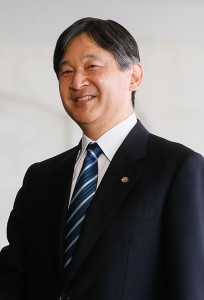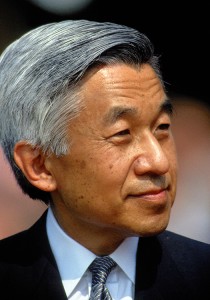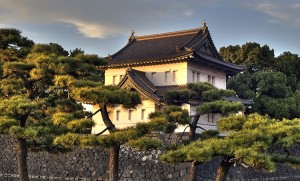Emperor Naruhito: Reiwa 1
Wednesday, May 1st, 2019May 1, 2019
Today, May 1, 59-year-old crown prince Naruhito took the throne as the new emperor of Japan. Naruhito succeeded his 85-year-old father, Akihito, who abdicated (gave up the throne). The Japanese monarchy, symbolized by the Chrysanthemum Throne, is said to be the oldest in the world. According to legend, the monarchy dates back to the 600′s B.C. and the reign of Jimmu, considered to be a descendant of the Sun Goddess. In 1947, Japan changed from a divine to a constitutional monarchy.

Naruhito became emperor of Japan on May 1, 2019, beginning the Reiwa period. Credit: Michel Temer (licensed under CC BY 2.0)
In Japan, each emperor is given a reign name according to the gengō tradition. Gengō is a practice borrowed from ancient Chinese royalty. It uses a reign name to define the emperor’s period of rule and to record time. Naruhito’s reign name is Reiwa, so today is the first day of Reiwa 1, his first year as emperor. Emperor Akihito’s reign name was Heisei, a period that began in January 1989. Thus the last months of Akihito’s reign took place in Heisei 31. Many people, businesses, and government offices in Japan use both gengō and the Gregorian calendar to keep track of time.

Akihito was emperor of Japan from 1989 to 2019–the Heisei period. Credit: © Mark Reinstein, Shutterstock
Reiwa (令和) is a combination of the kanji characters rei and wa. Kanji is the Japanese system of writing using modified Chinese characters. Rei and wa are taken from a stanza in a poem about plum blossoms that appears in the Man’yoshu (Ten Thousand Leaves), the earliest collection of Japanese poetry (written in the late A.D. 700′s). Placed in that literary context, reiwa can mean fortunate or joyful harmony. (Heisei means achieving peace.) According to Japanese Prime Minister Shinzo Abe, whose government chose the new reign name, the Reiwa period should bolster pride in the country’s history and traditions and create hope for the future.

The Imperial Palace is the home of the Japanese emperor. It stands in a beautiful parklike setting near the center of Tokyo. Credit: © Shutterstock
Naruhito was born in Tokyo on Feb. 23, 1960. He became heir apparent in 1989 after his grandfather Emperor Hirohito (reign name Shōwa) died and his father became emperor. Naruhito was formally named crown prince in 1991. In 1993, he married Masako Owada, a diplomat. Their daughter, Princess Aiko, was born in 2001. After Aiko’s birth, many Japanese began raising questions about the rules governing succession to the throne. Japanese tradition and law require that the imperial ruler be male. For a time, many Japanese hoped that this requirement would be changed so that Aiko could eventually inherit the throne. However, in 2006, the crown prince’s brother and his wife had a baby boy, Hisahito. Hisahito will likely become emperor after Naruhito’s death or abdication.


